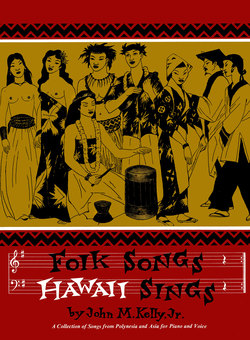Читать книгу Folk Songs Hawaii Sings - John M. Kelly Jr - Страница 8
На сайте Литреса книга снята с продажи.
ОглавлениеMUSIC OF POLYNESIA
The music of most of the Pacific islands divides itself generally between that which existed among native peoples before contact with Europeans and that which has developed in post-European times.
Very little pre-European music and dance exists today. That which has been preserved has, in many cases, lost its functional meaning. During the period of European exploration, trade, commercial exploitation, and Christianization in the Pacific in the eighteenth and nineteenth centuries, many native customs were supplanted with Western mores. Some were suppressed by laws and edicts.
The peoples of Polynesia had developed no written languages prior to contact with the West. Knowledge and productive skills, social sanctions, geneologies, personal and community experiences, and the imagery arising from man's relation to nature were embodied in music and dance. Together with the spoken language, music and dance were the main vehicles of communication. They served in many ways as libraries and schools. The teaching of these arts as vital parts of community life was often invested with the most sacred and powerful sanctions.
Most of the music of Polynesia sung and played today is made up of forms and characteristics lingering on from ancient times combined with elements borrowed from Western music. The ancient vocal music throughout the Pacific islands was confined to chants using one, two, three, or at the most, four tones. What the melodies lacked in tonal freedom was compensated for by the use of subtle inflection in the handling of words. Rhythm predominated in the old music, being used extensively not only with dancing but also with such vital community activities as digging, planting, hauling nets and logs, war training, ground stamping for planting, and similar ceremonies.
After contact with the first Europeans, the songs extended their scope, eventually employing all the melodic resources of the seven-tone diatonic scales and the techniques of part singing in harmony. Foreign words and phrases entered the songs, while the subject matter shifted from the imagery and experiences of the old communal order to the more individualized sentiments of the new.
